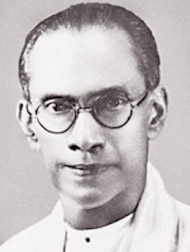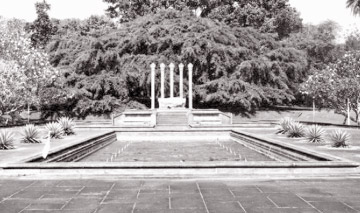SWRD Bandaranaike - a political assessment
S.S. Sahabandu PC
In the early hours of the morning of September 26, 1959, S.W.R.D.
Bandaranaike, the then Prime Minister, was assassinated by a monk,
Talduwe Somarama. With this event, perhaps a new political culture of
assassinations emerged in Sri Lanka's political horizon. It also created
a fear among his assassins, that Mr. Bandaranaike dead would be more
powerful than Bandaranaike alive.
 |
|
S W R D
Bandaranaike |
Mr. Bandaranaike's popularity had begun to be on the wane at the time
that he was assassinated, but by this act the assassins gave him a new
lease of life and his widow emerged as the world's first woman Prime
Minister. The early childhood and life of Mr. Bandaranaike is
well-known.
He made his bow to public life when he won the Maradana Ward in the
Colombo Municipal Council against A.E. Goonesinghe of the Labour Party,
a veteran trade union leader. Later he entered the State Council in 1931
as the member for Veyangoda.
He became the Minister of Local Government in 1936 and continued in
this post until 1947, to the end of the Doungoumore constitution. Under
the Soulbury constitution he became the Minister of Health and Local
Government in Ceylon's (as the country was then known), first Cabinet
and the Leader of the House in Ceylon's first Parliament. The Sinhala
Maha Sabha, the party that he led merged with the newly formed United
National Party (UNP), headed by the late D.S. Senanayake, thus giving
added strength to the UNP, both inside and outside Parliament.
As Minister of Health, he was sympathetic to the Ayurvedic physicians
and he was contemplating on setting up a separate Department for
Ayurveda to replace “The Board of Indigenous Medicine,” that was in
existence at that time.
Sri Lanka Freedom Party
The great depression and the malaria epidemic received the earnest
attention of Mr. Bandaranaike as a member of the State Council and later
as the Minister of Health. Speaking in the State Council in reference to
the malaria epidemic, Mr. Bandaranaike stated, “usually the man is dead
in a week or two, unless he has the constitution of a horse. Malaria
followed by dysentery would probably end the problem before the problem
is considered.”
As a historical figure, Mr. Bandaranaike would be remembered for two
events, the electoral victory of the MEP led coalition in 1956 and the
formation of the Sri Lanka Freedom Party, his creation, which is in
power today, almost 60 years after its inauguration. Both events are
over 50 years old and scholars can assess them now with access to the
government archives.
Mr. Bandaranaike, who had a personal and political battle inside the
UNP took the momentous decision of his life, when he left the UNP led by
D.S. Senanayake and sat in the Opposition in Parliament. When he left he
was accompanied by D.A. Rajapaksa, George R. de Silva, D. S. Gunasekera,
Jayaweera Kuruppu and A.P. Jayasuriya, all of whom were Members of
Parliament. Those who left were all members of the Sinhala Maha Sabha.
Many thought that he had ended his political life, but destiny proved
otherwise.
The events that led to his crossing the floor of the Parliament on
Budget Day with D.A. Rajapaksa resulted in the formation of the SLFP and
under his leadership, the political earthquake of 1956 became a reality.
Mr. Bandaranaike was perhaps the only political leader who could
crossover, retain his seat and lead the people.
 |
|
The
Bandaranaike Samadhi in Horagolla |
The SLFP was formed as a democratic alternative to the UNP.
Thereafter, the SLFP has formed governments at various times
alternatively with the UNP. A political leader who saw this trend tried
to prevent it by the Executive Presidency and a system of proportional
representation introduced by the J.R. Jayewardene constitution.
The SLFP had a solid base among the Sinhalese and especially the
Buddhists and the only way to prevent this advantage that they had was
to have the entire island as the electorate. Then the minorities can
play an important role and with these minority community votes the UNP
could be made victorious. Soon the SLFP was able to adjust to this
system and become victorious again.
To the SLFP, Mr. Bandaranaike was theoretician, financier and guiding
figure. His devout followers were prepared to support him in his
endeavours to lead the country to a new horizon as he did in the year
1956. His strength always came from the affection that he had from the
common people. His funeral drew large crowds as the people thought that
a harmless man had been assassinated without any reason. His
assassination prevented him from writing his version of 'Remembered
Yesterdays', as was done by his father.
The electoral victory of 1956 was a political tsunami. The events of
the year 1956 and the forces behind the victory shaped the destiny of
the island in the years ahead. The new government that he formed in 1956
gave emphasis to the concept of 'Apey Anduwa,' identifying itself with
the people. The ministers of his government wore national dress,
national culture was respected, foreign honours bestowed by the Queen of
England were abolished. The Sinhala language was made the official
language. Ayurveda was promoted and the dormant Sinhala intelligentsia
was prominent in their support for the government.
Foreign policy
Centuries of foreign rule which had led Sri Lanka to become a
colonial outpost was gradually dismantled. No change in an island is
possible without foreign influence. Sri Lanka became independent after
the Indian Independence Movement was completed.
The Indian leaders laid emphasis on the National Languages, national
dress as opposed to English and British attire.
This was the period of the Cold War. The Soviet Union was helping
liberation movements all over the world. The concept of Non-alignment
remained. Sri Lanka established close links with India and Indo-Ceylon
ties were at its height. A new chapter in foreign policy was begun and
Ceylon commenced diplomatic ties with the Soviet Union and China. Ceylon
opened up to the entire world and laid emphasis on playing an important
role in the Commonwealth. The British bases at Katunayake and
Trincomalee were terminated.
These changes in foreign policy laid the basis for socialism with the
concept of nationalization or state ownership. The transport industry,
mainly the buses, was nationalized and the Ceylon Transport Board was
formed.
This was a great success and the island was coordinated into one unit
through the resultant expansion of islandwide bus services. This
mitigated rural migration into urban areas as people could travel to
Colombo and other cities from faraway places.
The port was nationalized and its associated private enterprises
became state owned. The capitalist economy was gradually eroded and
Ceylon moved towards socialism. Gambling was not encouraged and horse
racing was abolished. Mr. Bandaranaike, a great liberal and democrat
resisted all attempts to interfere with the judiciary.
He was a champion of Human Rights and he treated his opponents with
respect. He wanted to forgive his assassin. Sir John Kotelawala of the
UNP, remarked that, “he was courageous in defeat and magnanimous in
victory.” He travelled all over the island and maintained his links with
the people.
Public service
Buddhism which had been fighting for survival under colonial rule was
openly promoted by the state. The Vidyodaya and Vidyalankara Pirivenas
were elevated to university status.
The Buddhist priests became great supporters of the government which
they had helped to create. He showed no pain in dismantling the very
foundation on which his early life was built. A Christian from an
aristocratic family with a British education, whose family had received
many favours from the British, changed his religion from Christianity to
Buddhism and started the process of dismantling the colonial past. What
Anagarika Dharmapala had started he completed.
He was Prime Minister only for three years. He pivoted change that
led to successive Bandaranaike governments. He was for devolution of
power and he initiated the Bandaranaike-Chelvanayakam pact which was
very far-reaching as it advocated wide devolution of power through the
creation of Regional Councils. He realized the dangers of leaving the
Tamil problem unsolved. English had to be replaced in the administration
but, this should be done gradually. Sinhala people should have equitable
access to the public service which was dominated by minority communities
under colonial rule. All these changes led to violence, which he
contained democratically.
If the Bandaranaike-Chelvanayakam pact had been implemented early,
the ethnic problem may not have escalated.
In his attempt to fight corruption he failed and a group of persons
from his own party assassinated him. The old principle of 'et u Brute'
was given a new dimension and renamed as the 'Budharakita principle.'
Mr. Bandaranaike was a man who commenced the transformation of the
colonial past to the modern Sri Lanka of today. However, what Sri
Nissanka QC offered him in 1947 at the 'Yamuna Conference,' he achieved
prior to his unfortunate death in 1959 and became Prime Minister in
1956. Mr. Bandaranaike died a martyr to the causes that he advocated. He
was a Banyan tree under which all other trees grew. Indeed, he was an
outstanding political figure of modern Sri Lanka.
|





